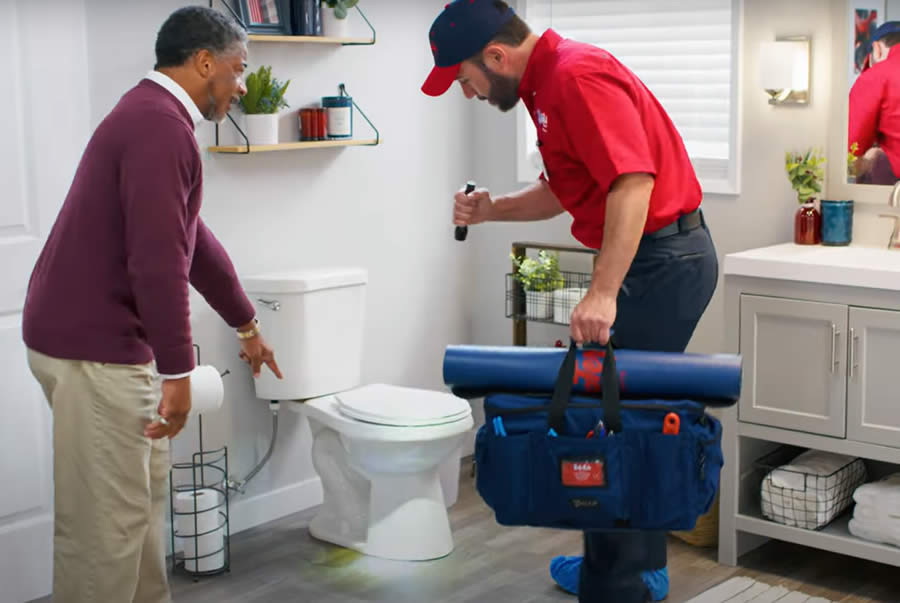Menu
Call This Thursday to Get $50 Off
Do You Need a Plumber in Dallas, TX? Call us Now to Get $50 OFF
4.8 / 5 Ratings based on 1384 reviews Great Plumbers, Great Reviews
Call This Thursday to Get $50 Off
Does your toilet’s current position hinder traffic flow or create an awkward layout in your bathroom? Is it too close to a wall? If so, these are good reasons to move the toilet a few inches. Optimal placement allows you to make the most of your bathroom space and create a more efficient bathroom layout.

Moving a toilet from one spot to another is typically a job that should be left to a local plumbing service in Grand Prairie, TX. However, homeowners with basic plumbing skills and the right equipment can successfully complete this project. It’s worth mentioning that incorrect toilet installation can be a disaster—if you’re not sure how to undertake the task, call a professional plumber for help.
The materials you’ll need for the job include an adjustable wrench, utility knife, plumber’s putty, wax ring, bolts, and washers.
Turn off the water supply and flush the toilet before you start to make any disconnections. This is necessary to avoid water damage and make the subsequent steps smooth.
Use a screwdriver to loosen the bolts connecting the tank to the bowl. Lift the tank off the bowl and set it aside. Be careful not to drop it.
The wax ring is a seal that forms an airtight connection between the base of the toilet and the closet flange on the floor. You need to remove the wax ring in order to be able to remove the toilet bowl. Use a utility knife to cut through the wax and remove it—not that you’ll need a new wax ring to use for reinstallation.
Depending on how far you want to move your toilet, you may have to cut and re-route the drain line. Use PVC pipe and the appropriate fittings to extend or adjust the existing drain pipe. Ensure that the new flange is positioned securely and level at the desired location.
Attach the new or modified flange securely to the subfloor and make sure it’s at the correct height for a good seal with the toilet. Place a new wax ring on the flange and carefully lift the toilet and align it over the flange. The bolts should go through the base holes.
Lower the toilet onto the flange and press it down to create a watertight seal with the wax ring. Use an adjustable wrench or screwdriver to tighten the nuts onto the base bolts to secure the toilet. Be careful not to overtighten, as this could crack the porcelain.
With the bowl in its correct position, connect the water supply line to the toilet tank and tighten it with a wrench. You need to be extra careful at this point because a simple mistake can render the whole installation dysfunctional. After you’ve attached the water line, lift the tank and place it on the bowl. Ensure the bolts are aligned and tighten them to secure the tank—be careful not to overtighten the bolts to a point where they can cause damage.
Apply caulk around the base of the toilet to prevent sewer gas leaks and water leaks. A layer of caulk also keeps the toilet stable and provides a clean finish.
Moving your toilet can prove to be a complex task in certain situations. If you need help from a skilled plumbing repair service, call the team at Mr. Rooter Plumbing. We are renowned for providing top-notch toilet replacement services for over 50 years. There’s no toilet installation project that is too complicated for our specialists.
Basements stay dry because the main sump pump does its job, but some storms push…
Read More+A sink full of dishwasher water can be a shock, but it tells you something…
Read More+A good food prep routine makes life easier until your disposal starts to grind louder…
Read More+Clogged drains are irritating. Water pools in a sink. Hair collects in a shower, and…
Read More+